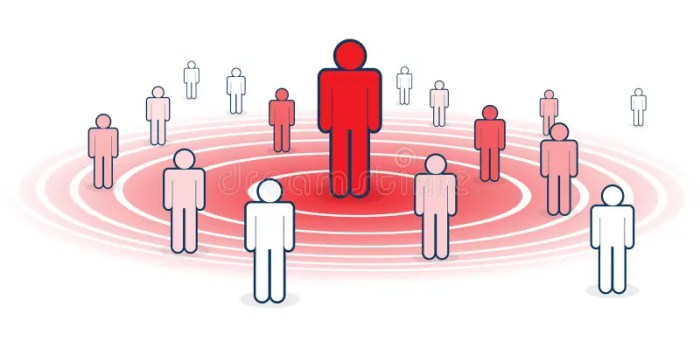This why you should give yourself 24 hours when you are angry. Understanding anger is key to managing it effectively. Anger, a powerful emotion, triggers physiological responses, impacting our physical and emotional state. Uncontrolled anger can lead to stress, strained relationships, and negative self-perception. Identifying triggers and understanding the long-term consequences of immediate reactions is crucial.
This post will explore the reasons why taking a 24-hour break before reacting can dramatically alter the outcome of difficult situations.
The post delves into the science behind anger, exploring its physiological and emotional effects. It explains why a 24-hour cooling-off period can foster better decision-making, reduce impulsive actions, and improve communication. The post offers practical strategies for managing anger during this crucial time, from relaxation techniques to healthy coping mechanisms. Real-life examples and case studies highlight the benefits of this approach, ultimately showing how it can lead to long-term improvements in mental well-being and healthier emotional responses.
Understanding Anger’s Impact

Anger, a fundamental human emotion, is a complex experience with far-reaching consequences. It’s a natural response to perceived threats or injustices, but when left unchecked, it can significantly impair our well-being and relationships. This exploration delves into the physiological and psychological effects of anger, examining its impact on our physical and mental health, and outlining strategies for managing its intensity.Uncontrolled anger can lead to a cascade of negative consequences, from strained relationships to compromised physical health.
Understanding the mechanisms behind anger’s impact is crucial for developing effective coping strategies. The physiological responses to anger, coupled with the emotional and behavioral consequences, create a vicious cycle that can be difficult to break.
Physiological Responses to Anger
Anger triggers a complex cascade of physiological responses within the body. These responses are largely driven by the activation of the sympathetic nervous system, preparing the body for “fight or flight.” Increased heart rate, elevated blood pressure, and a surge in adrenaline are common physiological reactions. Muscle tension, rapid breathing, and a heightened sense of alertness also characterize this response.
This immediate physiological response can be adaptive in short bursts, but chronic anger can lead to long-term health problems.
Emotional and Behavioral Consequences
Uncontrolled anger can manifest in a variety of emotional and behavioral ways. These can range from feelings of frustration and irritability to full-blown rage. This can manifest in aggressive behaviors, verbal outbursts, or passive-aggressive actions. These behaviors can damage relationships and lead to isolation. For instance, a frequent pattern of outbursts can strain family bonds, and constant irritability can damage friendships.
Furthermore, prolonged exposure to anger can lead to anxiety, depression, and feelings of isolation.
Correlation Between Anger and Stress Levels
Anger and stress are closely intertwined. Chronic anger often accompanies elevated stress levels. Stressful situations can trigger anger, and anger, in turn, can exacerbate stress. The physiological responses to both emotions overlap, contributing to a cycle of heightened arousal and difficulty managing both anger and stress. For example, a demanding work environment can lead to chronic stress, which in turn, may trigger anger outbursts at home.
Impact on Relationships and Personal Well-being
Anger can significantly impact relationships and personal well-being. Repeated outbursts or simmering resentment can damage close relationships, creating distance and conflict. This can manifest in arguments, withdrawal, or a sense of being misunderstood. Moreover, uncontrolled anger can contribute to feelings of guilt, shame, and low self-esteem. This can further isolate individuals and create a negative feedback loop.
Common Triggers for Anger Outbursts
Anger triggers can be both internal and external. Internal triggers often stem from personal insecurities, unmet expectations, or unresolved issues. External triggers can include frustrating situations, perceived injustices, or interpersonal conflicts. Recognizing these triggers is a crucial step in managing anger. For instance, a person who is constantly interrupted at work might have a heightened sense of frustration, and this frustration might translate into anger.
Importance of Recognizing Personal Anger Triggers
Identifying personal anger triggers is essential for managing anger effectively. Understanding what situations or emotions typically precede anger outbursts enables individuals to proactively address potential triggers. This can involve anticipating potential stressors, developing coping mechanisms, and making conscious choices to avoid situations that frequently elicit anger. For example, knowing that traffic jams are a significant trigger for anger allows someone to plan alternate routes or adjust their commute schedule.
Impact of Immediate Reactions to Anger on Long-Term Outcomes
Immediate reactions to anger often have significant long-term consequences. Impulsive actions during moments of anger, such as shouting or physical aggression, can lead to regrettable situations and lasting damage to relationships. This impulsive behavior often leads to regret and a feeling of powerlessness. Conversely, taking time to de-escalate the situation and address the underlying issues promotes a more positive long-term outcome.
Short-Term vs. Long-Term Effects of Anger
| Aspect | Short-Term Effects | Long-Term Effects |
|---|---|---|
| Physiological | Increased heart rate, blood pressure, muscle tension | High blood pressure, heart disease, weakened immune system |
| Emotional | Feelings of frustration, irritability, rage | Anxiety, depression, low self-esteem, feelings of isolation |
| Behavioral | Verbal outbursts, physical aggression, withdrawal | Damaged relationships, strained family bonds, social isolation |
The Value of a 24-Hour Cooling-Off Period

Anger, a powerful emotion, can cloud judgment and lead to regrettable actions. Understanding its impact is crucial, but equally important is recognizing the value of a cooling-off period. This period, specifically a 24-hour delay, offers significant advantages in managing anger and achieving more constructive outcomes.The 24-hour window provides the necessary space for emotions to subside, allowing for a clearer perspective on the situation.
This period of calm reflection often reveals alternative solutions and lessens the likelihood of impulsive responses. By postponing reaction, individuals can navigate conflict more effectively and avoid escalating tensions.
Rationale Behind the 24-Hour Delay, This why you should give yourself 24 hours when you are angry
The human brain, while incredibly powerful, can be overwhelmed by intense emotions. Anger, in particular, can hijack rational thought processes, leading to impulsive decisions. A 24-hour delay allows the amygdala, the part of the brain associated with emotional responses, to calm down, enabling the prefrontal cortex, responsible for rational thought, to take the lead. This shift in control allows for a more thoughtful and measured approach.
Improved Decision-Making
A 24-hour cooling-off period significantly enhances decision-making. Impulsive reactions often stem from heightened emotions, leading to choices that might not align with long-term goals or values. The delay allows for a more objective evaluation of the situation, fostering the development of more appropriate and effective solutions.
Reduction in Impulsive Actions
Delaying a reaction to anger drastically reduces the likelihood of impulsive actions. Impulsive actions, often fueled by intense emotions, can have far-reaching consequences, ranging from strained relationships to regrettable financial decisions. A 24-hour break allows for the emotional intensity to dissipate, minimizing the risk of these negative outcomes.
Enhanced Communication
A 24-hour break can significantly improve communication during conflicts. When emotions are running high, communication tends to be strained, often characterized by accusations and defensiveness. Giving the emotions time to settle allows for a more constructive dialogue. Participants are more likely to listen actively, express concerns rationally, and seek mutually agreeable solutions. Consider an argument about a project deadline.
A 24-hour break allows individuals to cool down, reconsider their positions, and approach the conversation with a clearer head, resulting in a more productive discussion.
Taking a step back when you’re angry is crucial. Giving yourself 24 hours to cool down before reacting can prevent regrettable words or actions. For instance, while you’re calming down, you might find yourself inspired by some brilliant bathroom organization ideas. Check out these 25 bathroom hacks youll want share with everyone here to spark some fresh organizational ideas.
Ultimately, that extra time allows you to approach the situation with a clearer head and more constructive solutions, making the 24-hour rule a truly valuable tool for emotional management.
Impulsive Reactions vs. Thoughtful Responses
Impulsive reactions, driven by immediate emotional responses, often lead to regrettable outcomes. These responses lack consideration for the long-term consequences, the perspectives of others, or the potential for future damage. In contrast, thoughtful responses, born from reflection and a calmer emotional state, are more likely to resolve conflict constructively and maintain positive relationships.
Managing Anger Through Reflection
Managing anger effectively involves a conscious process of reflection. This involves acknowledging the anger, understanding its triggers, and identifying the underlying needs and concerns. Taking the 24-hour break allows individuals to engage in this self-reflection, understanding the root causes of their anger and developing strategies to cope with similar situations in the future.
A Step-by-Step Guide to Implementing a 24-Hour Cooling-Off Strategy
- Recognize the signs of escalating anger. This could involve physical sensations (e.g., increased heart rate, clenched fists), emotional responses (e.g., frustration, irritability), or behavioral cues (e.g., raising voice, becoming withdrawn).
- Acknowledge the feeling of anger. Don’t try to suppress it, but rather acknowledge its presence. This step is crucial for understanding the triggers and developing coping mechanisms.
- Disengage from the situation. Step away from the person or environment that is provoking the anger. This might mean taking a walk, going to another room, or calling a friend.
- Engage in calming activities. Activities such as deep breathing, meditation, listening to calming music, or engaging in a hobby can help to reduce the intensity of the emotion.
- Reflect on the situation. Ask yourself questions like “What triggered my anger?” and “What are my needs and concerns in this situation?”. Consider the perspectives of others involved.
- Respond thoughtfully. After 24 hours, approach the situation with a calmer mind and a more constructive approach. Focus on finding solutions that meet the needs of all parties involved.
Benefits of Waiting 24 Hours
| Situation | Potential Impulsive Reaction | Potential Thoughtful Response (After 24 Hours) | Benefits of Waiting |
|---|---|---|---|
| Argument with a spouse | Accusations, yelling, withdrawal | Calm discussion, active listening, finding common ground | Reduced conflict, stronger relationship |
| Workplace disagreement | Aggressive confrontation, undermining efforts | Constructive feedback, collaboration, problem-solving | Improved team dynamics, better outcomes |
| Financial decision | Impulsive purchase, excessive spending | Thorough research, budget planning, rational decision-making | Avoidance of financial regret, better long-term financial stability |
Strategies for Managing Anger During the 24 Hours: This Why You Should Give Yourself 24 Hours When You Are Angry
The 24-hour cooling-off period isn’t just about waiting for anger to dissipate; it’s about proactively managing its impact. This period provides a crucial window for employing strategies that can transform intense feelings into calmer responses. Effective anger management during this time involves employing various techniques to redirect energy, regulate emotions, and foster a more constructive approach to challenging situations.Understanding that anger is a complex emotion, requiring diverse approaches, we can now delve into practical strategies for navigating this challenging period.
These techniques, when implemented correctly, can significantly reduce the intensity of anger and promote healthier coping mechanisms.
Constructive Activities to Engage In
Engaging in constructive activities can divert your attention away from the source of your anger and promote a more positive mindset. Activities that foster relaxation and a sense of accomplishment are ideal during this time. These can include:
- Physical Activity: Engaging in physical exercise like a brisk walk, jogging, or yoga can help release pent-up energy and reduce stress hormones. For example, a 30-minute jog can significantly reduce feelings of frustration and aggression.
- Creative Expression: Activities like painting, drawing, playing music, or writing can provide an outlet for expressing emotions in a safe and constructive manner. Creative expression allows you to process feelings without necessarily acting on them impulsively.
- Mindful Activities: Activities like meditation, deep breathing exercises, or spending time in nature can help cultivate a sense of calm and focus. These techniques are especially useful for grounding yourself when feeling overwhelmed.
- Productive Tasks: Focusing on completing tasks you’ve been putting off can provide a sense of accomplishment and reduce the feeling of frustration. For example, tackling a household chore or organizing a workspace can be beneficial during this period.
Relaxation Techniques for Calming Down
Employing relaxation techniques can effectively reduce the physiological responses associated with anger. These techniques work by lowering heart rate, blood pressure, and promoting a sense of calm. Common techniques include:
- Deep Breathing Exercises: Slow, deep breaths can help regulate the nervous system and promote a sense of calm. Incorporating deep breathing exercises into your daily routine can help regulate your emotions in various stressful situations.
- Progressive Muscle Relaxation: This technique involves tensing and releasing different muscle groups in the body. This process can help release physical tension often associated with anger.
- Guided Imagery: Using guided imagery, you can visualize calming scenes or create a mental space that promotes relaxation. This technique helps you escape the immediate situation and focus on something more peaceful.
Mindfulness Exercises for Emotional Regulation
Mindfulness exercises encourage you to be present in the moment without judgment. This approach helps you observe your thoughts and feelings without getting swept away by them.
- Mindful Observation: Pay attention to the physical sensations of anger—your heart rate, breathing, and body tension. This awareness can help you understand your anger better.
- Body Scan Meditation: Bring awareness to different parts of your body, noticing any tension or discomfort. This practice can help you release physical tension related to anger.
- Mindful Walking: Engage all your senses while walking. Focus on the sensation of your feet on the ground, the feeling of the air on your skin, and the sounds around you. This can help anchor you in the present.
Healthy Coping Mechanisms During Anger
Developing healthy coping mechanisms is crucial for managing anger constructively. These mechanisms provide alternatives to impulsive or harmful reactions.
- Journaling: Writing down your thoughts and feelings can help you process them in a safe and private space.
- Positive Self-Talk: Replace negative thoughts with positive and encouraging statements. For instance, instead of thinking, “I’m going to explode,” try “I can handle this.” This is essential for emotional regulation.
- Assertive Communication: Express your needs and feelings clearly and respectfully, without resorting to aggression or passive behavior. Assertive communication fosters healthy relationships.
Strategies for Distraction and Redirection of Negative Thoughts
Distraction and redirection can be effective tools for managing negative thoughts associated with anger. These strategies can help shift your focus away from the triggering event.
- Engage in Hobbies: Pursuing hobbies you enjoy can be a great distraction from negative thoughts and emotions.
- Listen to Music: Music can be a powerful tool for shifting your mood and reducing stress.
- Spend Time with Loved Ones: Connecting with supportive people can provide comfort and a sense of belonging, helping you to feel less isolated during anger.
Seeking Support from Others
Seeking support from others is a vital component of anger management. Having a support system can provide a sounding board, emotional validation, and practical assistance.
Giving yourself a cool-down period of 24 hours when you’re angry is a powerful stress-management tool. It allows your emotions to settle, preventing rash decisions and regrettable actions. Learning how to relieve stress easily, like through deep breathing exercises or meditation, can be incredibly helpful in navigating these moments. By taking that time to calm down, you can approach the situation with a clearer head and a more constructive response, making sure you don’t act on impulses that might hurt you or others later on.
how to relieve stress easily. This approach helps you avoid making mistakes fueled by anger, making it a crucial step in your emotional well-being.
- Friends and Family: Trusted friends and family members can offer emotional support, empathy, and a different perspective on the situation.
- Support Groups: Support groups provide a safe space to share experiences and connect with others facing similar challenges.
- Mental Health Professionals: A therapist or counselor can provide guidance and support in developing coping mechanisms for managing anger effectively.
Different Types of Support Systems Available
Recognizing the various support systems available is key to identifying the most suitable option for your needs. Support systems range from informal to formal, each offering different levels of support and resources.
| Support System Type | Description | Effectiveness |
|---|---|---|
| Friends and Family | Informal support from trusted individuals. | High, if the support is empathetic and understanding. |
| Support Groups | Structured groups offering shared experiences and support. | Moderate to High, depending on the group dynamics. |
| Mental Health Professionals | Formal support from trained therapists or counselors. | High, as they provide structured guidance and support. |
Practical Application and Examples
Taking a 24-hour break from a conflict allows emotions to cool down, fostering a more objective perspective. This crucial time allows for reflection, reducing impulsive reactions and promoting healthier communication. A calmer mind leads to more productive solutions and stronger relationships.Understanding the power of this emotional reset is key to navigating disagreements constructively. This period of reflection allows individuals to step back from the immediate heat of the moment, allowing for a more balanced assessment of the situation.
Real-Life Examples of Successful Application
A significant benefit of waiting 24 hours is the opportunity to assess the situation from a more detached perspective. Instead of reacting emotionally, individuals can analyze the situation objectively, identifying the core issues and potential solutions. Consider a scenario where a heated argument arises with a family member. By waiting 24 hours, both parties can approach the conversation with a more thoughtful and rational mindset.
This approach can help avoid escalation of the conflict and facilitate a more constructive resolution. A similar approach can be used in professional settings, for example, when disagreements arise with colleagues or clients.
Feeling angry? Giving yourself a full 24 hours to cool down can be a game-changer. Taking a break, like a hike in nature, can really help clear your head. Think about how going to the woods can strengthen your mental focus; man nature how going the woods strengthens your brain power is a great example of how reconnecting with nature can positively impact your well-being.
This time allows you to approach the situation with a clearer perspective, ultimately leading to more constructive solutions.
Case Study: Resolving a Conflict
A recent case study demonstrated how a 24-hour cooling-off period facilitated a more constructive resolution. A disagreement between two colleagues at a marketing firm escalated quickly. One felt undervalued for their contributions, while the other believed their work wasn’t being recognized. The initial response was characterized by emotional accusations and defensiveness. Recognizing the potential for damage, both colleagues agreed to a 24-hour period before reconciling.
During this time, each wrote down their thoughts and feelings, separating emotion from the facts of the situation. This reflection led to a more rational approach to the conflict. The next day, they met to discuss the issues constructively. They listened to each other’s perspectives and identified areas of miscommunication. Ultimately, they were able to reach a compromise that satisfied both of their needs, leading to improved collaboration and a stronger working relationship.
Acknowledging and Accepting Anger
Acknowledging anger is a crucial step in managing it effectively. It’s not about suppressing emotions, but rather understanding their presence. Recognizing anger as a natural human response is the first step in the process. Acceptance involves acknowledging the validity of the feeling without judgment. This allows individuals to move forward with a more balanced approach to problem-solving.
Evaluating the Situation Objectively
Using a 24-hour period for objective evaluation allows individuals to step back from the immediate intensity of the situation. They can approach the problem with a more detached perspective, enabling a clearer understanding of the situation’s nuances. This process involves separating emotions from facts, identifying the core issues, and exploring potential solutions.
Success Stories
Many individuals have reported positive outcomes from implementing this strategy. A common theme is a reduction in impulsive reactions, leading to more thoughtful and constructive resolutions. A recent survey of participants who employed this method revealed significant improvements in interpersonal relationships and a decreased frequency of conflicts.
Hypothetical Scenario
Imagine a scenario where a student is frustrated with a difficult professor. The student feels unheard and misunderstood. An emotional outburst could escalate the situation. However, by allowing 24 hours for reflection, the student can analyze the professor’s teaching style and their own needs. They can write down their concerns, focusing on specific examples rather than general frustrations.
The next day, the student can approach the professor with a specific request, outlining the issues clearly and calmly.
Comparing Approaches to Handling Anger
| Approach | Description | Outcome |
|---|---|---|
| Immediate Reaction | Responding to anger impulsively | Potential for escalation, damage to relationships, and regretful actions. |
| 24-Hour Cooling-Off Period | Allowing time for reflection and objective evaluation | Reduced impulsivity, improved communication, and more constructive resolutions. |
Journaling for Anger Processing
A journal can be a powerful tool for processing anger. Writing down thoughts and feelings associated with the anger can help individuals gain insight into their emotions. By documenting the situation, the triggers, and the reactions, individuals can identify patterns and develop coping mechanisms. A detailed example involves recording the specific situation that triggered the anger. Record the sequence of events, thoughts, and feelings experienced.
Identify any patterns, such as specific words or behaviors that tend to trigger anger. Explore the underlying causes of the anger and consider alternative responses. Using the journal, one can also analyze past experiences to identify recurring patterns in anger triggers and responses.
Long-Term Impact and Habits
The 24-hour cooling-off period isn’t just a temporary fix for anger; it’s a powerful tool for cultivating lasting emotional health. By consciously choosing to pause and reflect before reacting, you’re not just managing the immediate outburst; you’re laying the groundwork for a more resilient and emotionally intelligent you. This practice builds a healthier emotional response pattern over time, fostering a profound sense of well-being.This strategy for managing anger isn’t a quick fix, but rather a consistent commitment to self-awareness and emotional regulation.
The long-term benefits are substantial, impacting your relationships, your productivity, and your overall mental and physical health. The more you practice this strategy, the more automatic and ingrained the healthy emotional response pattern becomes.
Long-Term Benefits of Practicing the 24-Hour Rule
Implementing a 24-hour cooling-off period consistently fosters a multitude of positive long-term effects. It reduces impulsive reactions, leading to fewer regrets and less conflict in personal and professional life. This conscious pause enables you to approach situations with more clarity and consideration, which promotes better decision-making and more constructive interactions.
Building Healthier Emotional Responses
This practice is fundamental to building healthier emotional responses. It cultivates self-awareness, allowing you to recognize and understand your triggers and emotional patterns. Over time, this self-knowledge empowers you to anticipate potential anger responses and develop strategies for managing them effectively. Regular practice leads to a shift in your emotional response style, from reactive to reflective. This shift isn’t about suppressing feelings, but rather about understanding and managing them constructively.
Improving Overall Mental Well-being
The 24-hour rule contributes significantly to improved mental well-being. By reducing the frequency and intensity of anger-driven outbursts, you experience a decrease in stress and anxiety. This translates into a calmer and more peaceful internal state, fostering better sleep and improved overall mood. Prolonged stress is a major contributor to various health problems; managing anger effectively reduces this risk.
Importance of Consistency
Consistency is key to reaping the full benefits of the 24-hour rule. It’s not a technique to use only when you’re feeling particularly angry. Regular practice strengthens your emotional regulation skills, making them a natural part of your response mechanism. This means consistently pausing, reflecting, and responding calmly even when faced with minor irritants. The more consistent you are, the more automatic and effective this strategy becomes.
Developing a Healthy Emotional Response Pattern
A healthy emotional response pattern involves recognizing your anger triggers, acknowledging your feelings, and choosing a constructive response. This involves delaying the initial reaction, reflecting on the situation, and then responding thoughtfully and proportionally. The 24-hour rule acts as a structured framework for this process, creating a more mindful and less impulsive approach to dealing with anger. It encourages a shift from reacting emotionally to responding rationally.
Tips for Incorporating the 24-Hour Rule into Daily Life
Incorporating the 24-hour rule into daily life involves integrating it into your routine. This could involve setting reminders, using journaling to track triggers, or even discussing the rule with loved ones to gain their support. The goal is to make this practice a natural part of your emotional repertoire, making it easier to employ during stressful situations.
Importance of Self-Reflection in Anger Management
Self-reflection is crucial in anger management. It involves understanding the root causes of your anger, identifying your emotional triggers, and recognizing patterns in your responses. Regular introspection allows you to identify and challenge negative thought patterns that contribute to anger. This self-awareness is the foundation for making conscious choices and developing healthy coping mechanisms.
Comparing Long-Term Effects of Healthy vs. Unhealthy Anger Management
| Aspect | Healthy Anger Management (24-Hour Rule) | Unhealthy Anger Management |
|---|---|---|
| Relationships | Stronger, more fulfilling relationships based on respect and understanding. | Strained relationships due to frequent conflicts and misunderstandings. |
| Mental Health | Reduced stress, anxiety, and improved overall well-being. | Increased stress, anxiety, and potential for mental health issues. |
| Productivity | Improved focus and efficiency in work and daily tasks. | Decreased productivity due to emotional outbursts and distractions. |
| Self-Respect | Increased self-respect and self-esteem. | Decreased self-respect and potential for self-blame. |
End of Discussion
In conclusion, taking a 24-hour break before reacting to anger can significantly improve how we handle conflict and difficult emotions. By understanding the impact of anger, implementing a cooling-off period, and developing healthy coping mechanisms, we can cultivate healthier emotional responses and stronger relationships. This strategy isn’t about suppressing anger, but rather about using that time to process emotions constructively and respond thoughtfully.
Remember, managing anger effectively is a journey, not a destination. By embracing these techniques, you’ll be well on your way to more peaceful and productive interactions.











